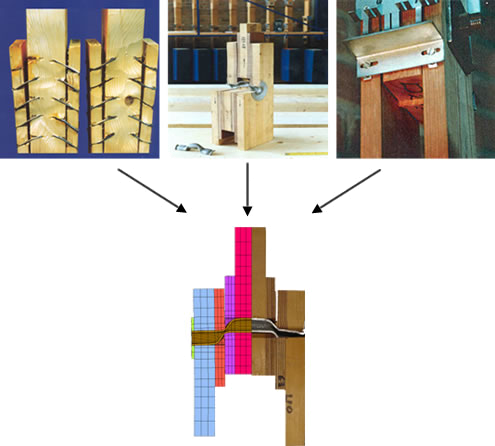Timber joints
In the field of timber joints, several new developments have taken place recently. Most of these developments, however, were related to 1D/2D - analytical modelling and experimental testing. An important challenge is found in the extension to 3D modelling by combining experimental and numerical research and investigating the influence of the density of timber as well as the presence of multiple fasteners on the strength.
In experimental terms, this implies establishing parameters for complex yielding criteria for various load directions. As for numerical modelling, this can take place in cooperation with materials science knowledge. An important field of interest here is the combination of modelling of elasticity and brittle cracking due to stress concentrations around the fasteners: special attention is given to tube connections and joints with steel plates in timber, as well as the optimization of them. Click here to watch an example of this advanced modelling.

Another research field is the behaviour of timber-concrete connections for the renovation works and construction of composite timber-concrete structures.
A major leg is then represented by the investigation into the long-term behaviour of timber connections, traditionally a main point at TU Delft.

Finally, research of connections in new types of timber, especially tropical hardwood, is conducted. The initial results of the laboratory tests seem to prove a factor 2.5 stronger connection compared to what is allowed according to current regulations. Therefore, this leaves room for scientific investigations leading to results that can be economically attractive to the industry.



